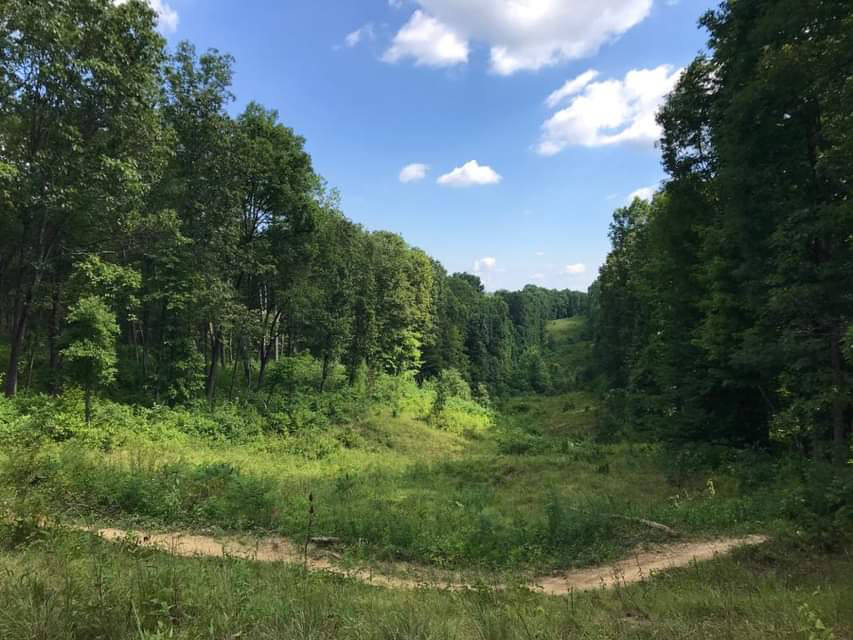Nestled in the town of Chauncey, Ohio is Baileys Trail System, a biking-and-hiking project that will expand to 88 miles of trails for outdoor tourists in Southeast Ohio. Baileys Trail Project launched last year during the pandemic, which tanked travel to urban areas but boosted outdoor recreation markets—in many cases even overwhelming them.
Baileys Trail System is innovative in two ways: 1) it is managed by local governments via the Outdoor Recreation Council of Appalachia (ORCA) in partnership with Wayne National Forest, and 2) it is funded through a mix of private and public investment (a pay-for-success model). The project is on National Forest land, making traditional grant funding difficult to access.

Due to the benefits to neighboring communities, the City of Athens (6 miles from Chauncey) has agreed to be a funder, and Athens County is expected to match those funds. Jessie Powers, former Athens County planner and now OCRA’s council director, is spearheading the efforts to develop the trail system and help Chauncey benefit from it.
In many ways, Powers is exemplary of the expatalachian story. She grew up in North Carolina and Mississippi, but her family is from Logan, Ohio. She had visited Southeast Ohio since she was a child; it was often a summer “highlight,” she said.
When Powers graduated college, she joined the Peace Corps and went to Kazakhstan in Central Asia to get more perspective. She taught English and then became a substitute teacher when she returned to America. Later, she pivoted to community development, managing grants at the state level in Ohio, but became attracted to local government. In 2017, Powers became the Athens County planner and first learned of the Baileys Trail System.

The Baileys Project began in 2015 as a discussion between the Athens Bicycle Club and Wayne National Forest. The Athens Bicycle Club remains an important partner doing much of the labor in clearing trails. The land is former mining land, locally called the Manhattan mine. Powers’ great-grandfather, coincidentally, worked there. Because it is former mining land, the project has access to some federal funds from the Department of Natural Resources for mine reclamation.
Baileys developed through an approach that uses already-available resources in the area, such as natural amenities and public land (this is usually called an asset-based approach). Athens County, for example, is 73 percent forested. Hocking Hills State Park, about 45 minutes away, attracts 4.5 million visitors per year. Powers believes that marketing Southeast Ohio as a regional destination for multi-day visitors puts the area’s best foot forward. The usage of Baileys Trail has been “like Memorial Day everyday,” Powers said, but visitors have been respectful of the new project.

Powers has a strong belief that Baileys should be accessible and benefit the local residents of Chauncey. The Trail System is “exposing populations who are historically isolated and under-invested in” to tourists, Powers said, while it’s providing critical resources to the community at the same time.
The Chauncey community has been deeply involved in the planning process. Before Baileys developed, the community identified a bikeway extension connecting Chauncey to Athens as a need in 2010. The trail system is helping leverage other infrastructure developments as well, such as additional sidewalks, parks, and public restrooms. Some people in Athens are donating bikes to the Chauncey community to make cycling more popular there. More funding opportunities around active transportation access are critical to rural residents’ opportunities.
Making Chauncey more bike-accessible and making bikeable connections to Athens could have real-world impact. “We’re talking about extreme poverty in a lot of cases,” Powers said. “Geography is naturally isolating. Any opportunity for us to provide an active transportation route is creating more hope for those born into carless households.”
Powers is driven by “equity and lack of opportunity” and a desire to help expand opportunities, especially for youth. The problem isn’t a lack of will. For example, an OCRA intern would ride his bike from Glouster to Chauncey for 9 miles on State Route 13 despite the danger to cyclists. The problem is a lack of opportunity and access.
“There is a desire here that is unmet; we don’t have the resources,” Powers said. Baileys Trail System, and other community development projects, are creating new pathways for communities with the resources available. It adds to basic amenities while giving locals and visitors the chance to enjoy the nature that surrounds them.

The trail system was closed to cyclists for winter, but reopens April 14. Consider visiting the new park or contributing to its development after it reopens in a few weeks.
Subscribe to The Patch, our newsletter, to stay up-to-date with new expatalachians articles and news from around Appalachia.
Alena Klimas is a trail enthusiast based in Asheville, North Carolina. Klimas is an avid mountain biker and trail runner. She visited Baileys in October with fellow expat Annie Chester to explore the new trails on her Liv bike, nicknamed Baby.



